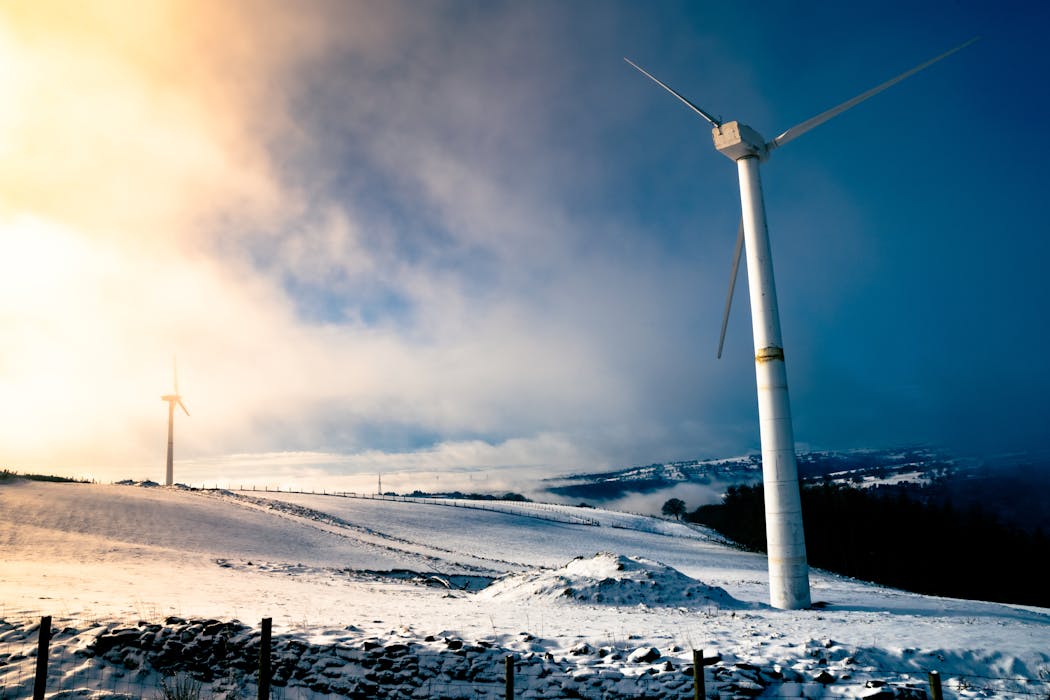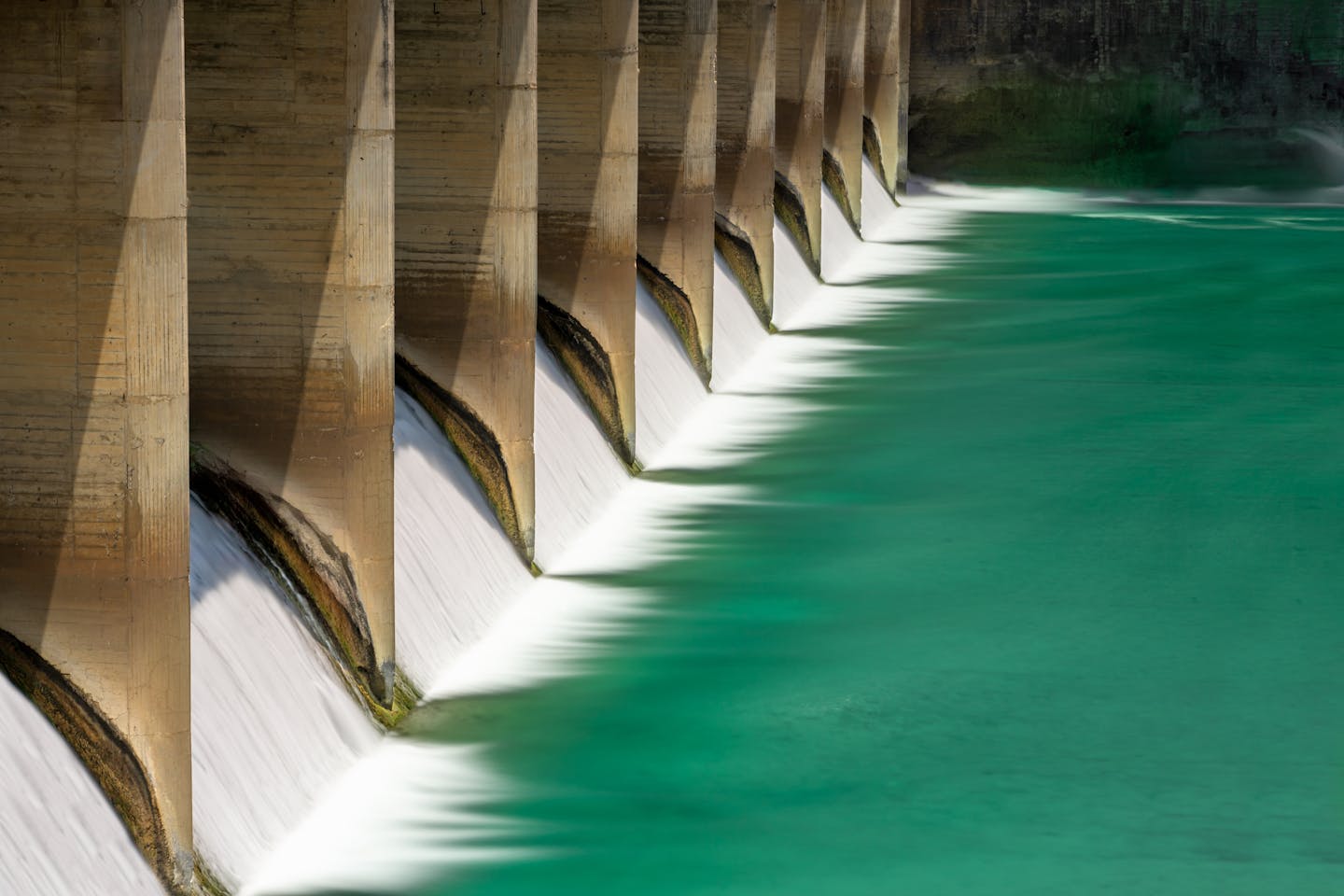
For most Brits, January 8 2025 was an uneventful Wednesday, albeit slightly cold. But these low temperatures, coupled with a significant drop in wind speed, contributed to a spike in the real-time electricity price to over seven times the 2024-25 winter average.
The National Energy System Operator (Neso), the organisation responsible for balancing electricity supply with demand minute-by-minute, highlighted “weather driven factors” as a major challenge on January 8. Neso’s costs to produce enough electricity to balance the system on this day reached £21 million – costs that increase consumer bills.
A new report, coordinated by the Royal Meteorological Society and supported by the energy team at AECOM, a global infrastructure consulting company, highlights how Britain’s electricity system is sensitive to seemingly benign weather conditions. This report highlights the importance of predicting and responding to these events – and provides evidence to inform how the future energy system could be designed to ensure it remains resilient to the weather.
Read more: What Europe's exceptionally low winds mean for the future energy grid
Every minute, Neso monitors weather conditions to make decisions about how best to balance supply and demand. If the forecast suggests a drop off in wind speed, then Neso can use a range of tools to make up for the resulting reduction in wind generation. This includes interconnectors (importing excess electricity from neighbouring countries), stored energy or gas generation.
Electricity demand also fluctuates depending on changes in weather. In winter, when the weather is dull and cold, people tend to use more heating and lighting (alongside increased kettle usage for more cups of tea). In summer, heatwaves can increase demand through fan and air conditioning usage.

The most difficult periods occur when there is an increase in demand at the same time as a decrease in wind generation. Weather that causes these cloudy and still conditions is referred to as dunkelflaute – German for “dark and still”.
Dunkelflaute conditions are also known as anticyclonic gloom. This has recently been affecting the UK’s weather. Researchers at the University of Reading have shown that dunkelflaute is usually associated with stationary high pressure over the UK. These systems get in the way and “block” wet and windy weather from hitting the British Isles.
Thanks to the accuracy of modern weather forecasting, there is usually plenty of warning about when these situations will occur. But there is a cost associated with requesting additional electricity generation at relatively short notice, as only a few power plants can switch on quickly, and they’re expensive to start and run. That puts the overall system price of electricity up.
These dunkelflaute episodes can be brief and intense like on January 8, when the price spiked so dramatically because forecasts gave limited warning. Or, they can be less severe but last for a longer period, for example in early November 2024, when there was an extended wind drought lasting several weeks. This leads to an extended period of high system prices for electricity.
Dunkelflaute conditions are not unique to the UK. They can stretch across multiple countries, as shown by researchers in Germany. More cables are being built to connect European energy systems and share power across borders. But if countries are experiencing wind droughts simultaneously, the ability of these connections to help balance supply and demand is reduced. Grids need to be resilient even if nations can’t import energy from their neighbours.

Future-proofing the energy system
In the future, wind and solar capacity is set to increase and electricity demand will jump due to more heat pumps and electric vehicles. The report models what the consequences of January’s extreme drop in wind speed would be in such a future energy system – increasing the number of wind turbines and solar panels alone is not enough. Other strategies are required to keep the lights on in a low-carbon electricity system.
Importantly, getting more of our electricity from weather-dependent sources does not mean that plans for a low-carbon energy system are impossible. But other technologies will be needed to plug the gap between the renewable generation at any given moment, and the demand at that time.
One option is increasing the amount of energy storage, using excess electricity at times of high winds to store energy for future wind droughts. Energy storage comes in many forms including pumped hydropower (pumping water uphill and letting it fall to release energy later), batteries and potentially green hydrogen (generated from the electrolysis of water).
Read more: Quantum computers can accelerate the transition to net zero power grids
Other options include interconnection with other countries’ networks and building other forms of low-carbon generation, like nuclear power stations. An interconnector to Denmark – Viking Link – came online at the end of 2023. This means Britain can import energy from Denmark when domestic wind generation is low, and export energy in the other direction when there is a surplus of renewable power, smoothing out electricity supply fluctuations in both countries.
Further new interconnectors, between the UK and the Netherlands, Belgium and Germany, are planned.
An alternative is to adjust demand to match the available supply. This is called “demand flexibility”. For example, consumers may be offered very cheap – even free – electricity during periods of excess renewable electricity generation, encouraging them to use more electricity when there is plenty of it. Businesses may also be incentivised to reduce usage when supply is tight.
New technologies can help reduce energy use at peak times, making it easier to match supply levels. For example, smart car chargers communicate with the grid and operators to adjust charging times to when there is less demand. Demand flexibility is already being trialled, and is likely to become more common in the future.
Britain needs the right mix of these solutions to maintain a system that continues to provide electricity in the ever-changing British weather. Much of Britain’s electricity will come from wind when it blows. But storage, interconnectors and flexible electricity use – informed by research into the frequency and severity of dunkelflaute – are vital components.
With this mix in place, days like January 8 will become much easier to manage.
Don’t have time to read about climate change as much as you’d like?
Get a weekly roundup in your inbox instead. Every Wednesday, The Conversation’s environment editor writes Imagine, a short email that goes a little deeper into just one climate issue. Join the 45,000+ readers who’ve subscribed so far.
This article is republished from The Conversation, a nonprofit, independent news organization bringing you facts and trustworthy analysis to help you make sense of our complex world. It was written by: Matthew Wright, University of Oxford; Ben Hutchins, University of Reading, and James Mollard, University of Edinburgh
Read more:
- Smart meters show your energy use but here’s how you can actually save money
- Quantum computers can accelerate the transition to net zero power grids
- Energy storage technology is accelerating – but grids aren’t ready for the transition
Matthew Wright receives funding from the Natural Environment Research Council through the Oxford NERC DTP.
Ben Hutchins receives funding from Natural Environment Research Council (NERC) through the Scenario training programme.
James Mollard receives research funding through a Network Innovation Allowance Project with National Grid Electricity Transmission. He is affiliated with the Royal Meteorological Society.


 The Conversation
The Conversation
 WFVX WVII News
WFVX WVII News Raw Story
Raw Story The Week
The Week America News
America News Bored Panda
Bored Panda 6abc Action News Sports
6abc Action News Sports AlterNet
AlterNet The Daily Beast
The Daily Beast